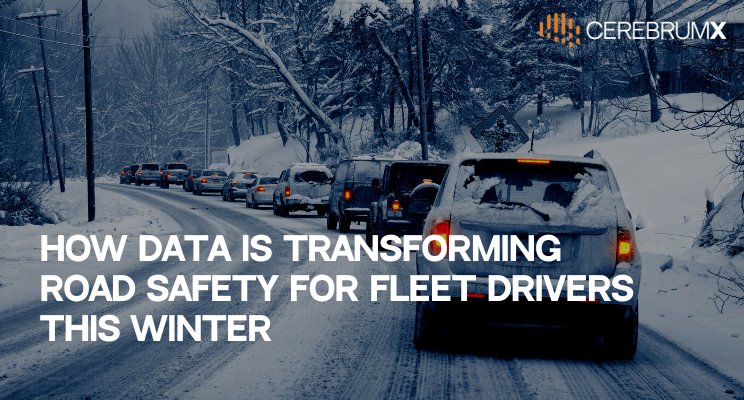If you think traffic is bad in your regular areas of commute, you know that it gets worse during the winter. With the snow and ice hampering driving conditions, stormy weather causing blockades, and the general visibility of the road lost, winters are not a great time for safe driving.
Last year, when the winter storm Uri hit Texas for four days, there were more than 700 road accidents reported in Austin alone. Travel rarely stops as conditions deteriorate because people still want to get on with their lives and their pre-planned journeys – but sometimes it could cost them their lives.
In this article, we talk about the effects of winter on road safety and some of the ways it is being improved today with vehicle data for traffic management. So, let’s get started!
Weather is the Second Leading Cause of Non-Recurring Highway Congestion
Americans spend close to a billion hours a year caught in non-recurring traffic Congestion – the second highest of which are caused by erratic weather conditions. It accounts for 25 percent of all traffic delays and is a problem that needs immediate solving. The solutions could not only free up a billion hours for the American people but also help in decreasing the road rage that follows to make up for this lost time in traffic congestion.
Implementing Weather-Responsive Traffic Management (WRTM) Solutions
The nuisance of increased traffic congestion and accidents during rough weather has been around for decades. Naturally, the hunt for possible solutions too has been on for quite some time. Today, Weather Responsive Traffic Management is seen as the solution that could end the disastrous consequences of rain and snow on American roads.
Weather Responsive Traffic Management or WRTM strategies provide timely, weather & road-related information to agencies in-charge so that they can take active measures to get around the problems. This leads to lesser congestion on the highways, active clearing of road blockages, and safer driving conditions for the people.
The two factors that make this solution work are credible and rich data from vehicles and the ability of authorities to take quick action based on the information. We’ll learn about both of these factors in the following paragraphs.
How Connected Vehicle Data for Traffic Management Helps in Improved Road Safety for Fleets During Winter
The National Centre for Atmospheric Research thinks of vehicle data as an excellent source of actionable weather information. The following variables can be learned about to get an idea of the conditions – barometric pressure, windshield wiper setting, headlights status, ambient air temperature, speed & heading, adaptive cruise control, location & elevation, hours of operations, ABS system, brake status, stability control, traction control, differential wheel speed, accelerometer and more.
Let’s find out how connected vehicle data plays a positive role in better traffic management and safe winter traffic car driving & road safety in the winter months.
AI-Powered Traffic Management Solutions Detect Bad Road Conditions & the Presence of Heavy Rain / Snow / Fog
Your speed, the frequency of your windshield wiper and other such sensor-derived data points from your car paint a picture about the conditions of the road. These can be verified depending on similar readings from other vehicles in the area.
An AI powered traffic management solution can take these findings to better allot resources and create better driving conditions to increase safety. Where there is congestion, traffic could be redirected. Where there are collision alarms, rescue teams can immediately be sent. When time means the difference between life and death, AI can save the important minutes that matter.
Connected Vehicle Data Insights Help Fleets to Boost Driver Safety During Winter
The conditions of the road matter, and the condition of the vehicle matters but what matters perhaps the most is the ability of the driver. Not all drivers can navigate the tricky roads of the winter – especially if they aren’t as experienced with the conditions. With data insights like driving patterns, braking patterns, traction, and other indicators, fleet managers can now get an idea of the abilities of their drivers in various conditions. This doesn’t just allow them to better divide work based on routes but also helps drivers train to get better in those areas and conditions.
Proactive Maintenance Ensures Vehicle Health
The great advantage of data insights is that – with enough of it – you can start noticing patterns to predict better. For instance, if you have an idea of when you need to change tires in advance, you’re saving yourself the troubles and expenses of an accident later.
Such proactive maintenance applies to many parts of the vehicles that undergo wear and tear, along with the servicing of the engine to keep it in top condition. When vehicle health is top-notch, winter breakdowns are a rare occurrence.
Continuous Fleet Tracking Enables Inspections Before and After the Winter Trips
It isn’t just driving that gets difficult during rough winters but also inspections. Regular inspections all year round based on fleet tracking can help you minimize in-person checks. You also have an idea of when the next service or tire replacement is due and you can get that hurried instead of getting caught with malfunctions in stormy winter weather.
Conclusion
CerebrumX is on a mission to make roads safer for drivers and fleets alike. The data collected from these connected vehicles are processed by high-functioning AI to deliver insights that help with smoother road navigation, increased convenience, and more safety during winter. . It is the equivalent of having a birds-eye view of any situation to be able to see solutions that are only obvious when the data is available and insightful.

